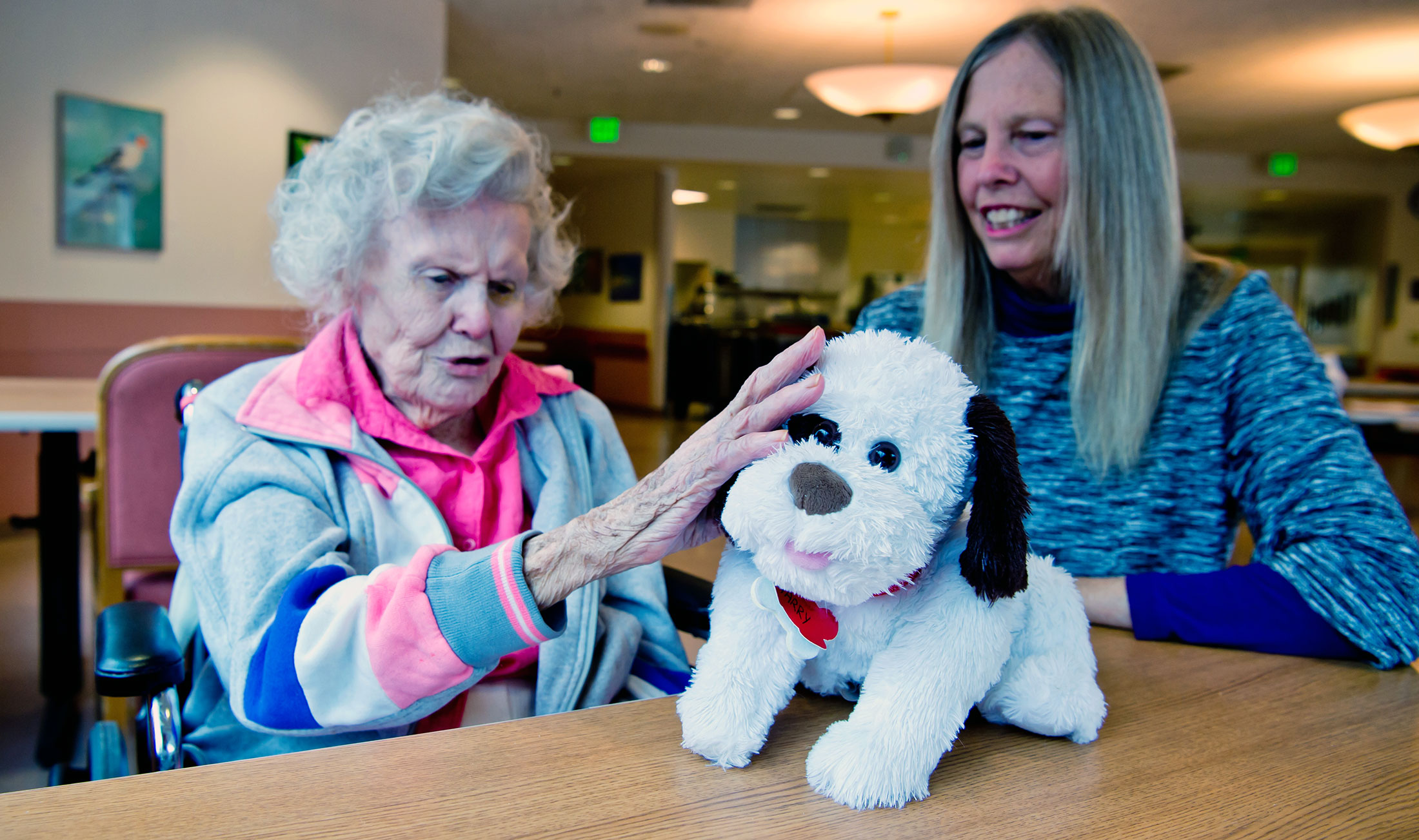Jewish Senior Living magazine 2017/2018

For resident Astrid Stange, Harry provides the right touch and company. Cynthia Zier is reassured to know that Harry gives her mother companionship and comfort.
Elsewhere in the Jewish Home, nine more robotic or animated pets are keeping company with residents, especially those in the dementia units.
“I consider it pet therapy,” says Jean Flores, formerly the Home’s dementia program coordinator. “It’s just as beneficial as bringing in a real animal.”
The two dogs and eight cats became part of the Jewish Home’s therapeutic program in February 2017 after the Home collaborated with Creative, Inc., a company that was testing a robotic cat designed specifically for seniors. A group of residents, including Ellen Marks-Hinkle, participated in that initial focus group. “It was the most special thing,” Ellen says. “It even behaved and felt like a real cat.”
Bringing the animated pets into the Home was a thoughtful, intentional process, beta testing residents’ reactions and responses, and ensuring that they were in no way infantilized or unaware that the pets, although lifelike, are animated, confirms Life Enrichment director Mediatrix Valera. “The cats are especially lifelike,” she says. “Because they have sensors, they respond appropriately. They’re soft, say ‘meow,’ and purr and vibrate when they’re stroked. And they curl up on laps, just like a live feline.”
Jean Flores always reminds residents that the robotic pups and cats are not real animals when she introduces them on her one-to-one visits. Having a pet nearby, she has found, is especially helpful when a resident is anxious. “It calms them down, relaxes them, and gives them a sense of companionship.” In addition, “the pets keep residents engaged and occupied,” she observes. “There’s less calling out and fewer complaints about pain.”
Pets “visit” residents, going room to room where they may stay for a few hours or remain for the night. The pets trigger memories and initiate conversations both among residents and with the certified nursing assistants who deliver them, thereby creating bonds and personal relationships.
Mediatrix Valera has set up policies for these visits, including guidelines to be sure the pets are sanitized. “We continue to monitor how the pets help and engage our residents.”
When Cynthia Zier, Astrid Stang’s daughter, first heard about the robotic animals, she was most pleased; it was a simple way to provide companionship to her 90-year-old mother. They opted for Harry because Astrid is not a cat person. Resident at the Home for six years (talkative and funny, she is described by her daughter as a star of the Home’s regular comedy clinic), Astrid has recently lost most of her sight. “The sensory loss is worse than the dementia,” Cynthia says. It is beneficial that Astrid can feel Harry’s soft fur, and when he barks at her, she can hear him and talk back.
“Harry is my mother’s companion,” Cynthia affirms. “Plus he has a calming effect on her, so she sleeps better when Harry spends the night.”
Disclaimer: Website content that still bears the names Jewish Home of San Francisco and Jewish Home reflects material that is in circulation or was published before we became San Francisco Campus for Jewish Living – on which Jewish Home & Rehab Center, our acute geriatric psychiatry hospital, and the new Lynne & Roy M. Frank Residences and Byer Square are located. Wherever possible, new and updated website content will bear our new names.